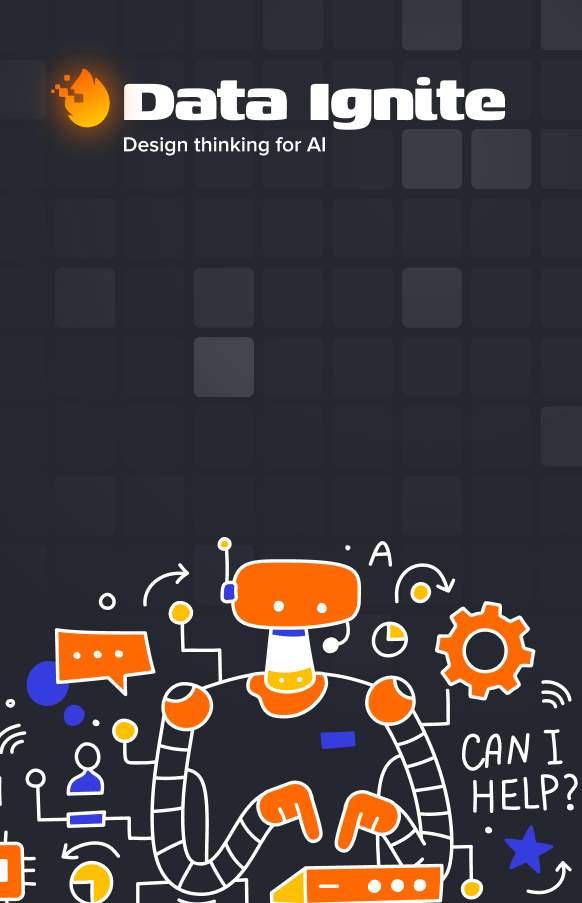Business Innovation Models: Drive Growth & Stay Competitive
Oct 7, 2025 in Guide: Explainer
Explore top business innovation models with real examples. Learn to select and apply frameworks that boost growth and keep you ahead.
Not a member? Sign up now
Predictions are TRASH, Decisions are KING
Kelwin on Jul 27, 2023
Artificial Intelligence (AI) has become a prominent field, and many organizations are eager to harness its potential. However, there is a crucial aspect that often gets overlooked: the decision-making process. After more than 10 years of working in AI, I firmly believe that instead of focusing solely on predictions, we should prioritize how AI can facilitate better decision-making. In this blog post, I will explore the significance of decisions over predictions and provide insights on aligning the two effectively.
When we read or hear about AI in the news, predictions are often emphasized. We come across claims that AI can detect emotions, identify criminals, or even predict job promotions. While these predictions may seem intriguing, we must question their practical value. The same holds when clients approach us with requests solely for predictions. We ask them, “What will you do with those predictions?”
At NILG.AI, we firmly believe that predictions without impactful decisions are meaningless. We must shift our focus from isolated predictions to a holistic approach that aligns AI with decision-making processes. That’s why our AI Case Canvas revolves around observing opportunities, defining visions, and using predictions to support better decisions that transform businesses.
To understand the importance of aligning predictions and decisions, let’s explore a few real-world examples where misalignment led to project failures.
In one project, a client requested a model to predict whether a customer would contact their customer support the following day. However, they intended to use this prediction to forecast demand. The initial approach involved running millions of individual predictions daily, leading to inefficiencies and high development costs. Instead, a more practical approach would have focused on forecasting overall demand, saving time and resources.
Another project aimed to address frequent errors in fulfilling client orders. The client initially focused on predicting individual product returns. However, their primary concern was ensuring sufficient stock availability to meet customer demands. By realigning the focus to forecast demand for each product, they could optimize stock management, minimize delays, and prevent losses.

Book a meeting with Kelwin Fernandes
Meet Kelwin Learn MoreThese examples highlight the significance of aligning predictions with the level of decisions being made. It is crucial to avoid pursuing predictions that are too granular or unrelated to the overarching goals of the business. By ensuring alignment and considering the appropriate level of granularity, organizations can make the most of AI technologies and achieve their desired outcomes.
If you’re interested in exploring our methodology in detail, we invite you to check out the free preview of our Data Ignite course. It provides a structured approach to understanding opportunities, defining visions, and integrating predictions to successfully make informed decisions and transform businesses.

Dive deeper into how AI use cases can be identified and developed.
Learn MoreWhile predictions may capture attention and imagination, they alone do not drive meaningful change. To leverage the full potential of AI, we must shift our focus from predictions to decisions. By aligning predictions with the level of decisions required, organizations can unlock the true value of AI, save time and resources, and drive transformational growth. Let’s embrace the power of decisions in the age of artificial intelligence.
Like this story?
Special offers, latest news and quality content in your inbox.
Oct 7, 2025 in Guide: Explainer
Explore top business innovation models with real examples. Learn to select and apply frameworks that boost growth and keep you ahead.
Oct 6, 2025 in Listicle: Round-up
Discover 10 actionable digital transformation best practices. Learn how to drive growth with strategic insights for AI and data-focused businesses.
Oct 6, 2025 in Guide: How-to
Learn how to conduct SWOT analysis with this practical guide. Get actionable strategies, real-world examples, and proven tips for strategic business planning.
| Cookie | Duration | Description |
|---|---|---|
| cookielawinfo-checkbox-analytics | 11 months | This cookie is set by GDPR Cookie Consent plugin. The cookie is used to store the user consent for the cookies in the category "Analytics". |
| cookielawinfo-checkbox-functional | 11 months | The cookie is set by GDPR cookie consent to record the user consent for the cookies in the category "Functional". |
| cookielawinfo-checkbox-necessary | 11 months | This cookie is set by GDPR Cookie Consent plugin. The cookies is used to store the user consent for the cookies in the category "Necessary". |
| cookielawinfo-checkbox-others | 11 months | This cookie is set by GDPR Cookie Consent plugin. The cookie is used to store the user consent for the cookies in the category "Other. |
| cookielawinfo-checkbox-performance | 11 months | This cookie is set by GDPR Cookie Consent plugin. The cookie is used to store the user consent for the cookies in the category "Performance". |
| viewed_cookie_policy | 11 months | The cookie is set by the GDPR Cookie Consent plugin and is used to store whether or not user has consented to the use of cookies. It does not store any personal data. |